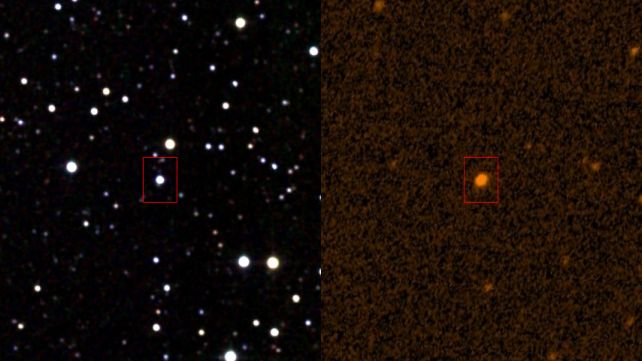One of the most mysterious stars in the Milky Way might soon have an explanation for its odd behavior.
It's called Boyajian's Star, or KIC 8462852 – less formally known as Tabby's Star, a yellow-white glimmer some 1,470 light-years away – and its strange short-term brightness fluctuations and longer-term changes have so far defied scientists' attempts at explanation.
There are several candidates for what might be going on, but progress has stalled for want of more detailed information. But we won't have to wait much longer.
Led by astronomer Massimo Stiavelli of the Space Telescope Science Institute (STScI), a team has taken observations of Boyajian's Star using the James Webb Space Telescope, and is undertaking to decipher them.
"KIC 8462852 (Boyajian's Star) displays an extraordinary light curve, showing both deep 'dipping' events and long-term changes," the team wrote in their proposal.
"We propose observations of this object in the wavelength range 1.7 to 25 microns in order to measure the thermal emission from the circumstellar material causing the observed light curve variations."
JWST/MIRI raw image titled "Understanding the origin of Boyajians Star occultations".
— Jwst Feed (@WebbFeed) August 7, 2023
Taken 8/5/2023 10:23:14 PM. pic.twitter.com/hoBSLBNVCM
Boyajian's Star, named after Louisiana State University astrophysicist Tabetha Boyajian, who led the paper announcing the discovery of its weirdness, has been a puzzle since 2015. Since its discovery, it's been observed dimming, multiple times, by up to 22 percent of its normal brightness. And records show that it has been repeatedly doing so for years.
Scientists know of phenomena that can cause a star's light to dim. The most obvious example is an orbiting exoplanet. But exoplanets cause periodic dips in starlight, that usually block the same small percentage of light each time. Boyajian's Star dims erratically, at differing depths, with no perceivable pattern in the timing of the dips.
A one-off dip could be an occultation, or something random passing between us and the star. But that's not what we've seen with Boyajian's Star, either. In fact, records show it's also gone through periods of significant brightening. It truly is just an absolute weirdo (although maybe not the only one of its kind).
Explanations of the dimming of the star have ranged from the relatively straightforward – orbiting clouds of dust or debris – to the outlandish, the "alien megastructure" hypothesis that shot Boyajian's Star to terrestrial fame. That's since been ruled out, but that hasn't brought us much closer to an answer.
The fact that infrared wavelengths of light come through the dimming more readily than ultraviolet bands suggests that whatever is causing the dips is not a solid object.
Options include comet swarms, debris from a shredded exoplanet that got too close to the star, debris from a shredded exomoon, some sort of weird internal fluctuations (Betelgeuse, anyone? OK, different kind of star, but still, not impossible!), and an uneven cloud of dust.

It's also possible there's something going on that we haven't thought of yet! Stiavelli and his colleagues hope that JWST observations, collected in near- and mid-infrared with NIRSpec and MIRI, will help narrow it down. Especially because infrared wavelengths penetrate dust more efficiently than shorter wavelengths, and JWST is a powerful infrared telescope.
"The first goal of these observations is to distinguish among competing models for the star's behavior: a detection would confirm the circumstellar nature of the occulting material; a non-detection would be highly constraining, and motivate further development of alternative models for the star's light curve, such as dense knots of material in the interstellar medium, or an intervening cold disk of a dark object such as a black hole," they write in their proposal.
"The second goal of these observations, in the event of a detection, is to determine the temperature and luminosity of the circumstellar dust to better understand this extraordinary object."
We don't have any further answers yet – the researchers are probably hard at work analyzing the new spectra, and working out what they mean – but since the program has been marked as completed, it hopefully won't be long now.
We'll be waiting on tenterhooks in the meantime.
